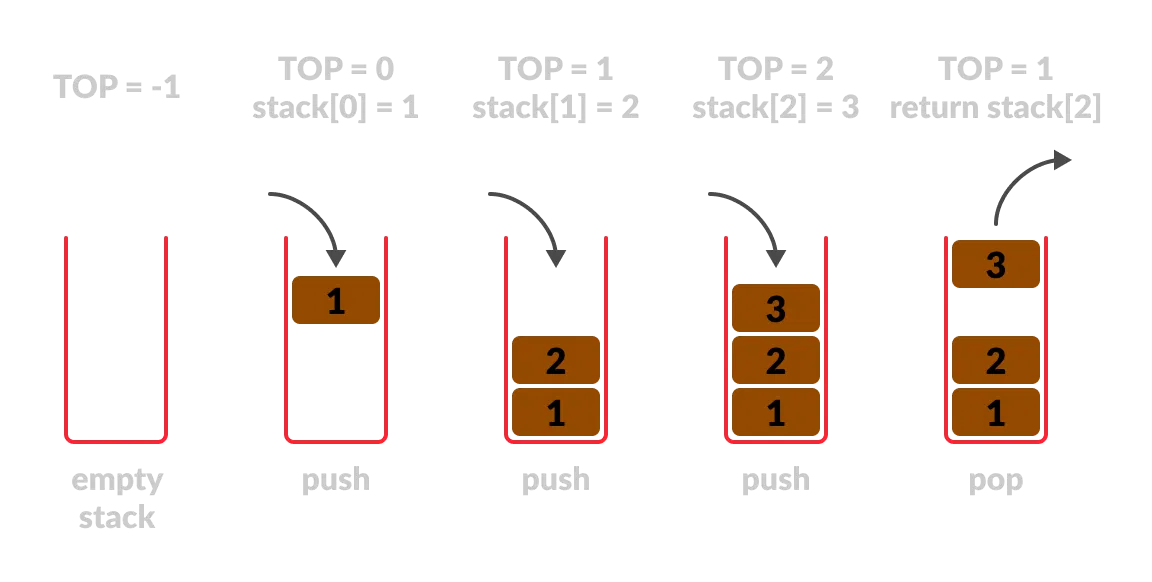Stacks and Recursion
In programming, a stack is a data structure that follows the Last In, First Out (LIFO) principle. This means that the last item added to the stack is the first one to be removed. You can think of it as a stack of plates: the plate you placed last is the first one you take off the top. A stack has two primary operations:
Push
Add an item to the top of the stack.
Pop
Remove the item from the top of the stack.

Example: Factorial With Recursion
Here’s how a stack works in recursion:
def factorial(n):
if n == 1:
return 1 # Base case
return n * factorial(n - 1) # Recursive case
If you call factorial(4), the call stack works like this:
- Push
factorial(4)onto the stack. - Push
factorial(3)onto the stack. - Push
factorial(2)onto the stack. - Push
factorial(1)onto the stack. factorial(1)returns1→ pop from the stack.factorial(2)computes2 * 1→ pop from the stack.factorial(3)computes3 * 2→ pop from the stack.factorial(4)computes4 * 6→ pop from the stack.- The output will be
24.
Summary
- A stack is a fundamental data structure used to manage program execution and function calls.
- In recursive functions, the call stack tracks nested calls and ensures proper execution order (LIFO).
- Failure to manage recursion properly (e.g., forgetting a base case) can result in a stack overflow, crashing the program.